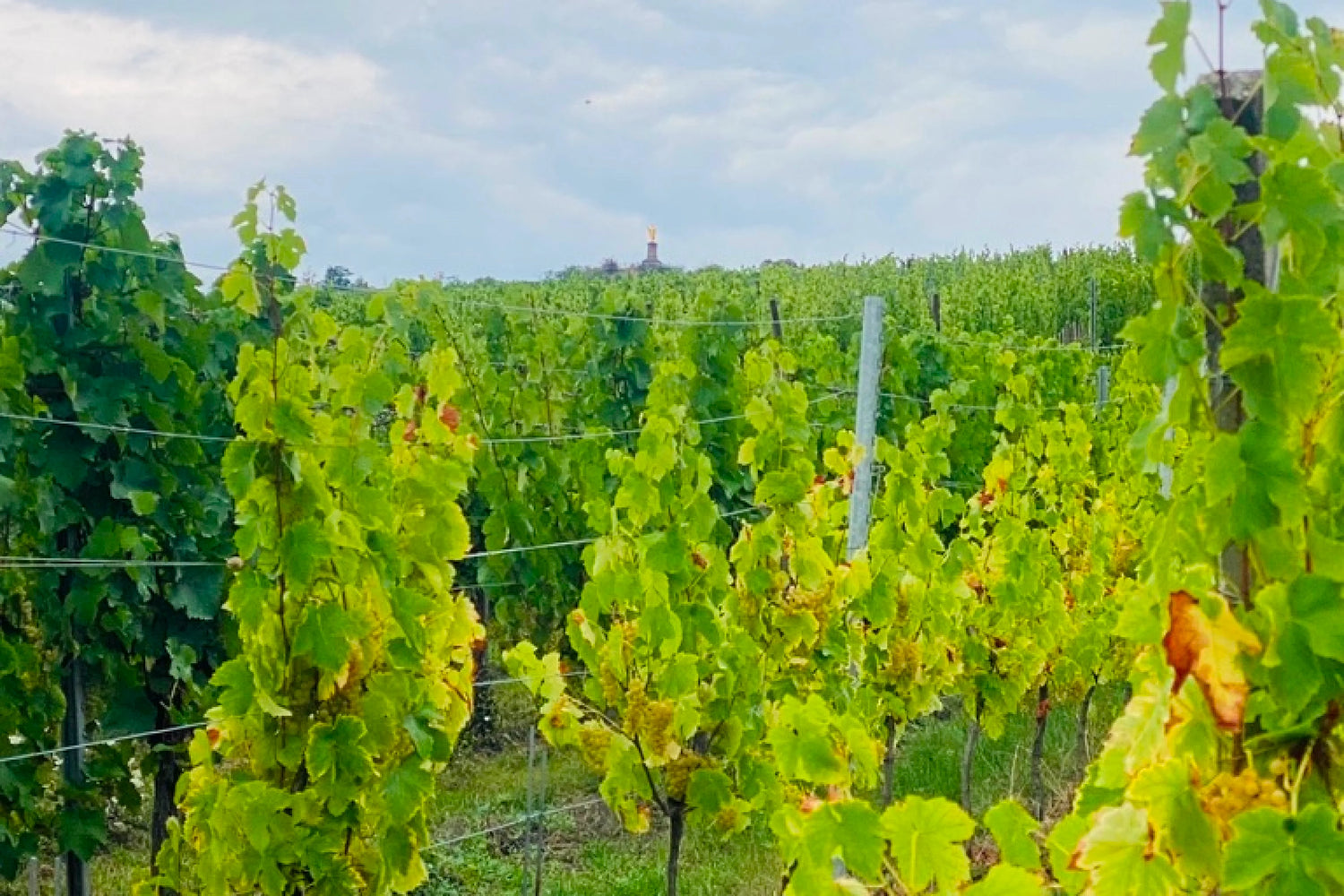Wine terms are, literally and figuratively, a foreign language. One of the most common questions we get is what terms like cru, grand cru, and premier cru mean on a wine bottle. Do they denote quality? Do they mean anything specific? The answer is when it comes to French wines, these terms can mean quite a lot! Whereas in other countries they can often be more marketing or short-hand than anything else. To help you navigate the terminology we’ve prepared a short guide below to break down the meaning.
What Exactly Does 'Cru' Mean?
The term cru is often translated as "growth", but at its core it refers to a vineyard or group of vineyards. Cru is deeply intertwined with the concept of terroir — a term that encompasses the vineyard's soil, climate, altitude, and aspect. Predominantly used within the French appellation system, cru is a beacon for identifying superior vineyard sites, meaning wines from established crus are generally higher quality and come from precisely defined plots of land.
The French are exceedingly protective of this system, with wine experts able to tell you the difference between adjacent crus and how that impacts the wines from each (for example, differences in soil, drainage, average sunlight, etc., all of which can significantly impact the quality, flavour, and character of wine).
But! You absolutely do not need to know that much to be able to use the term cru on a bottle as a helpful guide to what you’re buying.
What About Outside of France?
It's crucial to note that the term cru holds true meaning only within the French borders. The usage of ‘American cru’ or the reference to certain Italian vineyards as crus borrows the prestige of the term without official backing. For instance, vineyards in Italy’s top regions are sometimes informally called crus, but the word has no formal meaning in italy. So, outside of French wines, if you see cru on a bottle, you can generally ignore it as marketing fluff.
Understanding the Hierarchy: Grand Cru vs. Premier Cru vs. the Rest
Pivoting back to France, you will often see terms like grand cru, premier cru, and a range of variations thereof on bottles, and the knowing difference can be hard as what the terms mean (and which is better) differ by region:
-
Bordeaux: Bordeaux is comprised of a number of different regions, each with different systems of classifying wines (just to make it extra complicated).
-
Medóc: The most famous system in Bordeaux is the ranking established by the Bordeaux Classification of 1855 for the Medóc region. This historic classification recognized the top wine estates, as Grand Cru Classé. The Grand Cru Classé vineyards are then subdivided into five tiers from premier cru (‘first growth’) to cinquièmes cru (‘fifth growth’).
So, in the Medóc, premier cru is a type of grand cru, with premier cru is the most prestigious of the grand cru wines. However, you’re unlikely to see a premier cru from the Medóc wine in your local shop as these are wines like Château Lafite Rothschild and Château Latour, some of the most highly regarded (and expensive) wines in the world.
You may also see Medoc Cru Bourgeois, which applies to 246 chateaux (think wineries) not part of the 1855 Grand Cru Classé that were separately classified in 1920. These are generally very good wines but lack the prestige of the Grand Cru Classé.
-
Graves: The Graves region uses a single level of classification, the Crus Classes de Graves. You’ll see this on bottles as Graves Grand Cru Classé.
-
St. Emillion: In St. Emillion, the top classification is Premier Grand Cru Classé (subdivided further still into classes A and B), followed by Grand Cru Classé. The classification of individual crus is periodically revisited, with crus moving up and down this hierarchy (or removed entirely). You can imagine the insane politics of this entire process.
-
Pomerol: The Pomerol region, which is the home of world-class wines like Chateau Petrus, doesn’t even use a ranking system!
-
Burgundy: In Burgundy, grand cru vineyards occupy the highest tier, with premier cru vineyards a step below. The village classification is a step below premier cru, followed in turn by the regional classification of Bourgogne (French for Burgundy). Burgundy's classification is deeply rooted in the region's history, tracing back to the meticulous vineyard demarcations by the Cistercian monks in the 12th century.
-
Beaujolais: Cru in Beaujolais refers to a specific subregion rather than a vineyard, each known for its unique expression of the Gamay grape.
-
Rhône Valley: Similarly, in the Rhône Valley, cru refers to areas; terms like premier cru and grand cru aren’t formally defined (or often used) in the Rhone Valley.
-
Chablis: In Chablis, grand cru is superior to premier cru. If a bottle is labeled grand cru alongside the name of a specific vineyard, it means the grapes came from that single vineyard. Grand cru without the vineyard name means the grapes likely came from multiple places.
- Alsace: Alsace boasts 51 vineyards that are designated as grand cru, each distinguished by its specific terroir characteristics. There is no premier cru in the Alsace.
Con-cru-sion:
Understanding the nuances of cru on wine labels is more than a lesson in terminology; it's a gateway to better understand, tasting, and buying and expanding your knowledge of wine's rich tapestry. Whether you're deciphering a complex Burgundy label or exploring the historic vineyards of Bordeaux, the term cru serves as a wonderful guidepost along the way.
Until next time, Stay nosey!





